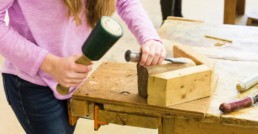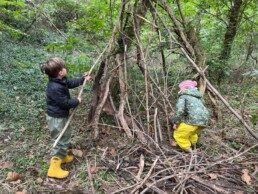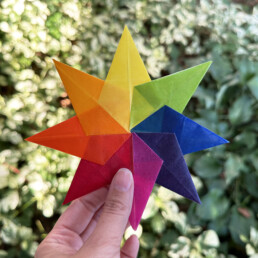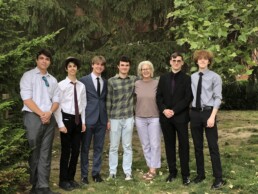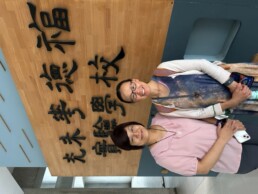A Creative Approach to World Languages at the Susquehanna Waldorf School
The joyful teaching of world languages in Waldorf schools was initiated by Rudolf Steiner, the founder of Waldorf education. He proposed that world languages should be taught from an early age to make the best use of the powers of imitation that enabled the children to first learn their native language. He recommended that two world languages should be taught beginning in the first grade. Susquehanna Waldorf School follows this recommendation with Mandarin during grades 1-8, Spanish during grades 1-4, and Classical Latin during grades 5-8.
The Waldorf education approach to teaching modern world languages is based on the idea that the primary purpose of world language acquisition is to develop the ability to communicate. All world language teaching in Waldorf schools can also be said to deepen the inner life of the student as the following quotes elucidate.
“Language instruction in the Waldorf School trains the capacity for human sympathy; it is social pedagogy; it is a pedagogy of peace, not through discussion of becoming informed, but through the cultivation of the ability to perceive.” Johannes Kiersch, author of Language Teaching in Steiner-Waldorf Schools
“A person who sympathetically enters into another language opens doors in the soul, becomes sensitized to other peoples and other modes of experiencing reality, and not least of all, learns to understand his or her language better. The new language provides a subtle, contrasting counterbalance that helps offset the one-sidedness of the person’s native tongue and culture.” Michael Navascues, Waldorf Teacher and Professor of Spanish Language at the University of Rhode Island
Modern World Language Study at SWS
“Steiner envisaged (or explained) that modern foreign languages must be learned entirely from the human encounter, from the conversation between teacher and pupils, from dialogue: just as it happens with the mother tongue, through verbal interaction: comprehension and the ability to speak must arise out of the activity.” Cristof Weichert, author, retired Waldorf teacher, and former head of the Pedagogical Section at the Goetheanum.
Mandarin Chinese and Spanish are modern world languages taught at SWS. The following are highlights of each curriculum.
Mandarin Chinese: According to language expert Benjamin Davies, Mandarin Chinese is the hardest language for English speakers to learn. Interestingly, Mandarin Chinese is also the most widely spoken native language in the world. Here at the Susquehanna Waldorf School, children are blessed to have the opportunity to start learning Mandarin in the first grade. Their Mandarin Chinese journey will continue until they graduate in eighth grade. Students take Mandarin Chinese for two periods per week.
In the early grades, the experience of the Mandarin Chinese language is completely oral. Mandarin Chinese has four basic tones and one neutral tone. The tonal nature of the language makes speaking it very hard for English speakers. During the first three years of learning Mandarin Chinese, the main focus is on the auditory inputs. All learning occurs within an oral context through songs, poems, games, activities that involve rhythm, and situational dialogues. The children feel, act, and live the language, connecting with every aspect in an unconscious, playful, and lively way. Through these activities, they not only learn vocabulary and language concepts they also have the opportunity and advantage to lay a strong foundation for the correct tones from the very beginning. In the Waldorf classroom, repetition is imperative for the absorption of the language.
As students continue through to eighth grade, they learn to write Chinese characters and increase their understanding of grammar and syntax. The students memorize ballads, hear and read dramatic stories, recite ancient poems, sing songs from specific regions of China, and learn about traditions and customs. These feed their active interest in other cultures.

Spanish: Learning the Spanish language raises one’s social conscience and cultivates an interest in and respect for others. Susquehanna Waldorf School sees world language study as a window into the soul of another culture. The way we think is expressed through the language we speak. At SWS we nurture a cultural understanding of other people through acquiring their language.
In first grade, Spanish is taught through oral context with verse, song, and activities that involve rhythm, drama, and situational dialogues. In second grade, children learn extensive poems and verse by heart.
Songs, poems, games, and drama are central to all lessons in third grade as is the focus on rhythm. Children relate to emotional content long before they relate to intellectual content. Fourth grade marks the beginning of academic work through the writing of known verses. Continued acquisition of vocabulary is emphasized.
Classical Latin is not a modern language, or is it?
At the Susquehanna Waldorf School, Classical Latin is studied in Grades 5-8. Latin is the universal language of Western civilization. Some of the most sophisticated ideas in the Western world were first expressed in Latin. Latin is a highly organized and logical language. The study of Latin sharpens the mind, cultivates mental alertness, creates keener attention to detail, and develops critical thinking.
Latin is hiding in plain sight in the English language. Since nearly two-thirds of all English words are derived from Latin, the study of Latin gives invaluable insight into English vocabulary and the structure and meaning of complex words. Additionally, a knowledge of Latin provides a window into commonly taught Romance languages such as Spanish, French, and Italian. A grounding in Latin will, in later years, be beneficial to our students when preparing for pre-college testing, graduate testing, and for those who go on to study law, medicine, and other sciences.
Our classical Latin program at SWS brings the Latin language to our students with joy by celebrating ancient festivals, reading myths and legends, discussing archaeological finds, and enlivening elements of Roman culture through the performance of short plays, verse, and poetry. Latin vocabulary and grammar and Classical Latin pronunciation are emphasized in all of the grades.

The Susquehanna Waldorf School’s cohesive manner of presenting our World Language program puts us, along with other Waldorf schools, in the vanguard of language instruction in North America. Our creative approach to teaching world languages fills our students with the joy of learning.
“The heart of the Waldorf method is that education is an art.” Rudolf Steiner
Lisa Sweeney
Classical Latin Teacher
Susquehanna Waldorf School
2024
Why is Waldorf Education the fastest-growing educational movement?
Why is Waldorf Education the fastest-growing educational movement?
A personal perspective.
Waldorf Education is reported to be the fastest-growing non-sectarian, independent educational movement in the world. According to data from 2022, Waldorf World List there are 1,270 Waldorf and Rudolph Steiner Schools in 80 countries and 1,928 Waldorf Kindergartens in more than 70 countries. This global expansion shows that parents all over the world are seeking a holistic education for their children.
Thirteen years ago, as parents of a two-year-old and 11-month-old, we began researching schools for our oldest child. Unfamiliar with Waldorf education, we found Susquehanna Waldorf School’s website and decided to attend an Open House. On the day of the visit, my toddler refused to wear clothes, so we arrived late. I entered the beautifully historic school feeling embarrassed and weary, carrying a reluctant two-year-old. I'd missed the tour, but a kindergarten teacher, Ms. Wendy, warmly welcomed us. My son promptly took off his shoes and began exploring the classroom while I worried about how inappropriate this might be. Ms. Wendy crouched down and spoke to my son in a beautiful way, and he was captivated. She understood him, she welcomed us, and I immediately knew we’d found a rare gem of a school. We never made it past the kindergarten classroom that day, but we had all the information we needed— this was a place of beauty, joy, respect, and acceptance with teachers who truly understood children’s needs.
Now, years later, as SWS’ Admissions Coordinator, I have the privilege of introducing families to SWS and Waldorf Education. Many of these families arrive seeking an alternative to public or other independent school options. They are often captivated by the hallmarks of the school— the joyfully balanced, holistic approach to education, the warmth of the community, and the beauty of the physical space. Our new families are generally seeking three things that Waldorf education uniquely provides: community, connection to nature, and a balanced curriculum rooted in a knowledge of child development.
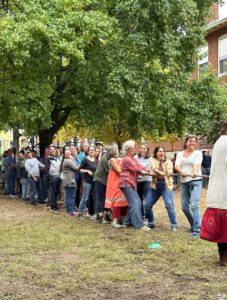 1) Community
1) Community
Many prospective families have children born just prior to or during the pandemic. These children have often experienced isolated early years, and parents are eager to support their social-emotional development. Parents are amazed when they witness SWS’s play-based early childhood classrooms, lively with snack preparation, artistic endeavors, and deep imaginative play. Interactions with peers are opportunities to experience cooperation, conflict resolution, empathy, and redemption— keys to healthy social development. Loving teachers and assistants support children as they navigate the sometimes bumpy efforts of working within a community.
Parenting can be isolating and confusing. Many parents seek not only to support their child’s social development but also a desire to find a place where the whole family becomes part of a community. The SWS parent community and parent education offer a warm embrace and connection for families seeking a like-minded approach to parenting. Alum parent and Board President Dave Knapp reflects that through his involvement in the SWS community, “I learned at least as much as my children did, I became a better parent, a better person… know that this school is going to change your life. It’s changed mine.”
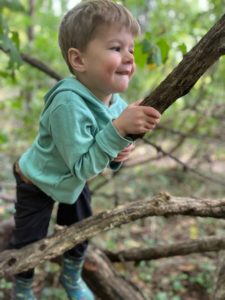 2) Connection to Nature
2) Connection to Nature
Research emphasizes the importance of getting outdoors, especially for young children. Being in nature supports a child’s social-emotional regulation, mental health, intellectual development, and increases motor skill development. The Child Mind Institute explains why outdoor play is so important for children, “Spending time in nature can build their confidence. There's a lot less structure than most types of indoor play, and they can choose how they interact with the nature around them. This gives them practice managing their own actions and encourages creativity and imagination.”
At SWS, our emphasis on physical movement throughout the day is becoming more and more unique. Our students delight in going outdoors for recess or nature walks twice a day all the way through 8th grade, regardless of the weather. As Waldorf teachers love to share, “There’s no bad weather with the right gear.” Our students experience the joy of the changing seasons through direct observation. As one Kindergarten parent, Laura K. shared, “We know we would’ve wanted it for ourselves, so it’s a gift to our children.”
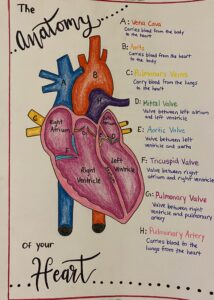 3) Curriculum
3) Curriculum
Many families find SWS after recognizing that their local public or independent schools haven’t been a fit for their children. Technology is taking the place of experiential, hands-on learning and parents are noticing the detrimental effect it has on their children. They notice their child is anxious and overwhelmed by large class sizes and no longer enjoys school—many share the “spark” of learning has gone out. The Waldorf curriculum is infused with art, music, and movement and children learn traditional concepts in age-appropriate and imaginative ways, making learning engaging at all levels. The Waldorf curriculum encourages the development of skills and the capacity for learning. The whole child (“head, heart, hands”) is considered in each level of development, providing a balanced foundation for lifelong learning. SWS students graduate not only with the skills needed for high school but also an intrinsic motivation and excitement for learning. New parent, Sherrie M. shares the world of difference since coming to SWS, “Prior to coming our older daughter did not like school and did not enjoy her experience in public school. Coming to this school, now she doesn’t like weekends anymore because she wants to be at school! That’s a complete 180. She loves the community, her teacher, her classmates. We’ve seen such growth in her reading, math has been explosive for her— the uncovering of what’s underneath represents such growth.”
Many years ago, we began our family’s journey at SWS, enrolling in the Parent-Child class. We weren’t sure if this would be a long-term educational fit and had no idea what lay ahead. Through the steadfast support of teachers and fellow parents, we began to learn about the truly unique Waldorf curriculum and have seen our three children thrive—growing and developing into strong artists, musicians, scholars, and athletes. I wanted my children to love learning, to be curious, and to be stretched. Now, with the perspective of 13 years, one graduate and another soon to be, I couldn’t imagine that my children could get as rich an education anywhere else.
Are Waldorf Schools Art Schools?
The Waldorf curriculum has been intentionally designed to provide a well-rounded education. Students engage in a wide range of subjects, including mathematics, science, language arts, history, and geography. One aspect that sets Waldorf Education apart, however, is its commitment to integrating artistic activities into every aspect of learning. This has led to the misconception that Waldorf schools are only for “artistic students” or are “art schools.” However, the Waldorf curriculum does not include art classes in the manner of most other schools; rather, it's about enlivening all subjects with artistic means to create joyful, rich, and engaging learning experiences for students.
In Waldorf Education, art is not a separate or optional activity; it is an essential tool for teaching and learning. Through artistic activities, such as drawing, painting, music, and theater, students actively engage with academic subjects in a way that makes learning come alive. For example, when studying history, students might create historical plays or artistic projects that allow them to immerse themselves in the time period being studied. This hands-on approach not only deepens their understanding but also makes the learning experience more enjoyable.
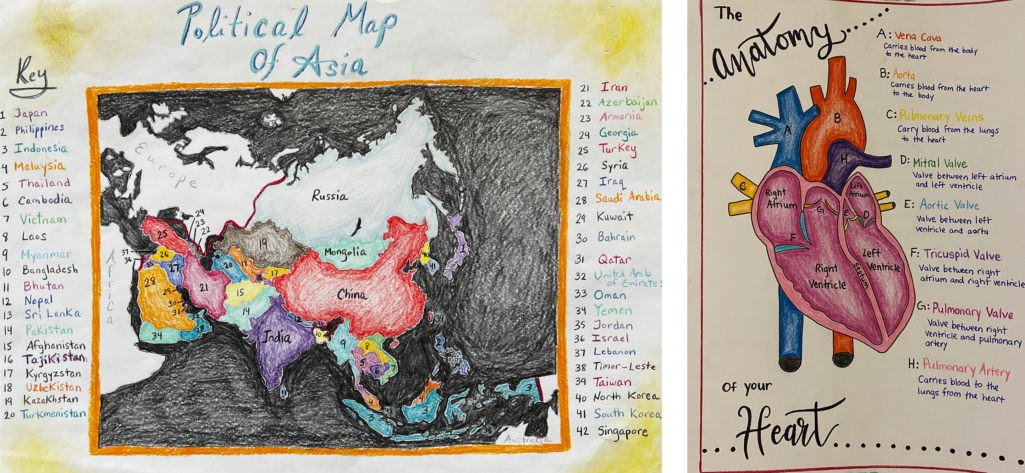
Art in Waldorf Education plays a crucial role in fostering creativity and imagination. By encouraging students to express themselves through various artistic media, they develop the ability to think outside the box, problem-solve, and explore their individuality. This creative spirit extends beyond the art studio and into all aspects of their lives. Students learn to approach challenges with innovative solutions, and they are better prepared for a world that increasingly requires adaptability and creative thinking.
Critics might argue that an emphasis on art could lead to less rigor. However, this is far from true in Waldorf Education. The curriculum is academically challenging and aims to prepare students for a broad range of future endeavors. An artistic approach enhances academic learning by making complex concepts more accessible and engaging. For example, in mathematics, students might use artistic patterns and designs to better understand abstract concepts. In science, they might draw and label intricate diagrams to understand biological processes. The artistic elements provide a concrete and imaginative connection to abstract ideas, making them easier to grasp and recall.
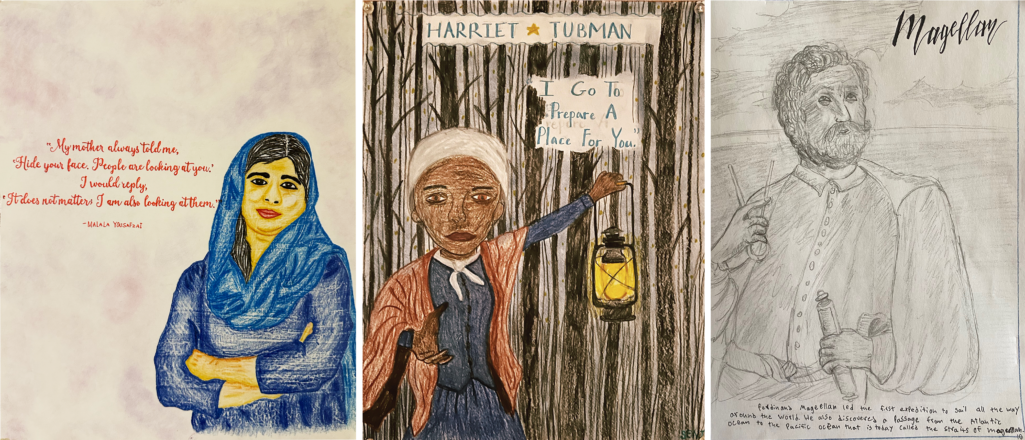
Susquehanna Waldorf School’s strong commitment to academic excellence and deep appreciation for the role of art in learning are perfectly paired. This results in a nurturing environment where students flourish academically and artistically.
The role of art in Waldorf Education is not merely an add-on or extracurricular activity; it is a fundamental hallmark of the curriculum. By incorporating art into all subjects, we empower students to become creative, critical thinkers while maintaining a rigorous academic program. In this holistic approach to education, the arts are not just a means of expression but a powerful tool for unlocking the full potential of each student. Waldorf Education serves as a reminder that nurturing a child's creativity and imagination is just as important as developing their academic abilities, and the two are beautifully intertwined on the path of learning.
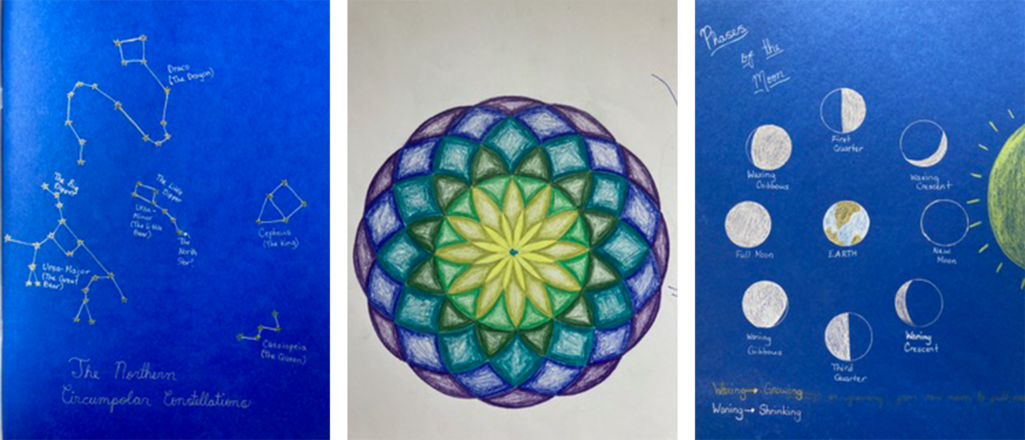
Alum Spotlight: Jason Piperberg - Illustrating Dreams into Reality
 Jason Piperberg
Jason Piperberg
Class of 2004
Meet Jason Piperberg, an accomplished illustrator and comic artist whose journey from the halls of Susquehanna Waldorf School to the vibrant streets of Philadelphia has been nothing short of inspiring. Jason's artistic prowess and dedication to his craft have led to collaborations with renowned artists, making his mark in the world of comics and illustration.
Early Roots at SWS:
Jason's passion for art and comics was sparked at Susquehanna Waldorf School (SWS), where his journey began in the 4th grade. His desire to become a professional artist and delve into the world of comics took shape, supported by the Waldorf curriculum The process of illustrating Main Lesson books (now called Morning Lesson books) was pivotal, establishing the foundation for his future endeavors.
"My favorite part of the Main Lesson books was making the illustrations for what we were learning about, and that's essentially what I do now, every day," Jason reflects on his time at SWS.
From SWS to the University of the Arts:
After graduating from SWS in 2004, Jason continued his educational journey at The University of the Arts in Philadelphia, a city that has become a significant part of his life. Philadelphia provided the backdrop for his college years, and the city's vibrant atmosphere sparked his creative spirit.
Artistry in Motion:
Since graduating from The University of the Arts in 2012, Jason has doggedly pursued his artistic dreams. He has stackled diverse projects, showcasing his versatility and creativity. Notable accomplishments include working on posters for the Philadelphia Eagles, contributing to Archie Comics' Sonic Universe and Mega Man titles, and creating all the art and book layout for the comic that was then made into the Netflix show Raising Dion.
Current Comic Projects:
Jason is currently immersed in three exciting comic projects, "My Neighbor Necromancer," a YA horror/adventure comic, and "Binary Sea," a captivating blend of Pirates of the Caribbean, Star Trek, and Master and Commander. Both demonstrate his storytelling finesse. The third project, "Doctor Livewell," tackles a unique theme – abdominal pain – and is a collaboration with Dr. David Suskind, a pediatric gastroenterologist.
Waldorf-Inspired Creative Process:
Jason's creative process begins with rough thumbnail sketches, and evolves into intricate line work and vibrant colors. While he acknowledges the absence of explicitly Waldorf-inspired elements in his process, he believes that the essence of his SWS education provided a firm foundation and continues to influence his approach.
Reflecting on SWS:
Looking back on his time at SWS, Jason credits the school for honing his ability to translate words into visual art, a skill that is crucial in his work today. Despite initially feeling different in the larger high school setting, his Waldorf background and the presence of other Waldorf graduates helped him navigate the transition and find lasting friendships.
Advice for SWS Students:
As Jason imparts wisdom to current SWS students embarking on their journeys, he emphasizes the inevitability of change. "Be aware that things always change," he advises. Jason encourages students to embrace the evolving phases of life, learn from challenges, and find their own pace.
In the dynamic world of illustration and comics, Jason Piperberg stands as a testament to the transformative power of passion, education, and the unique journey each individual embarks upon. His story is inspiring for budding artists, illustrating that early interests, gifts and dreams nurtured in the classrooms of Waldorf education can indeed flourish into remarkable careers.

See more of Jason's work at: https://jasonpiperberg.com/
Montessori and Waldorf Education: Comparing Two Unique Approaches to Learning
Choosing the right educational philosophy for your child is a crucial decision. Two independent school alternatives often considered by parents are Montessori and Waldorf education. These two approaches share certain foundational principles, such as child-centered learning and fostering independence, but their distinct differences can directly impact a child's educational experience. In this blog post, we'll explore how Montessori is similar to and differs from Waldorf education to help parents gain greater insight to make an informed decision for their child’s educational journey.
Montessori Education:
Maria Montessori's educational philosophy is centered around the idea that children have an innate desire to learn. Montessori classrooms are prepared with carefully designed materials encouraging hands-on, self-directed learning.
Key Features of Montessori Education:
- Individualized learning: Montessori education emphasizes individualized learning, allowing each child to progress at their own pace. This approach helps children develop a strong sense of autonomy and responsibility.
- Freedom within limits: Students have the freedom to choose their activities but within defined boundaries. This balance helps foster discipline and self-regulation.
- Specific learning materials: Montessori classrooms are equipped with specialized materials that encourage children to explore and experiment, promoting cognitive and motor skill development.
Waldorf Education:
Waldorf educational philosophy, founded by Rudolf Steiner, provides a holistic approach to learning and emphasizes creativity, imagination, and artistic expression. Waldorf education offers a unique approach that values the development of the whole child – mind, body, and spirit. It prioritizes creativity and a deep connection to the natural world. The gradual introduction of technology and the focus on storytelling and the arts in Waldorf education fosters a strong sense of wonder and a love for learning.
Key Features of Waldorf Education:
- A focus on imagination: Waldorf education encourages children to live deeply into imagination and creativity through activities such as storytelling, art, and music. This provides the foundation for creative problem-solving, artistic appreciation, and higher-order conceptualization.
- Morning Lesson Blocks: Grades students engage in extended "morning lesson blocks," delving deeply into academic subjects over a period of several weeks. This approach allows students to immerse themselves in the topic, allowing for deeper understanding and recall. Paired with the morning lesson block, students also have classes in foreign languages, music, handwork, and other special subjects.
- Minimal Use of Technology: Waldorf schools typically limit the use of technology in the early years, promoting a sensory-rich and experiential approach to learning. Waldorf philosophy fosters a strong bond between teachers and students unimpeded by technology in the early years. The Waldorf philosophy indicates a way for students to learn through imitation, imagination, and experiential exploration.
Similarities and Differences:
While Montessori and Waldorf education may seem different in their approaches, they do share some similarities:
- Child-Centered: Both philosophies put the child at the center of their educational experience, valuing the unique needs and interests of each student. Waldorf Education also places a heavy emphasis on the child and family as part of a learning community.
- Hands-On Learning: Both encourage experiential, hands-on learning, though the materials and activities differ. Waldorf Education emphasizes an integrated arts approach rather than art as a separate subject (as in Montessori).
- Teacher as Guide: In both Montessori and Waldorf education, teachers serve as guides and facilitators rather than authoritative figures. Waldorf teachers often stay with their class for multiple years, some 1st through 8th grade.
When choosing between Montessori and Waldorf education, parents must consider the individual needs and personality of their child. Both approaches have their merits and can provide a rich educational experience. Waldorf education, with its emphasis on holistic development and nurturing creativity, can be a compelling choice for parents seeking a well-rounded educational experience that celebrates the individuality of their child within a supportive community.
Hear from a family who made the switch from a Montessori school to a Waldorf School in their child’s 3rd-grade year
“After 5 years of Montessori education, we started looking for other options when our oldest child was around 8 years old and our youngest was in kindergarten. We couldn’t really define it at the time, but we knew something was missing from our eldest child’s education. We wished for him to be more engaged and excited about what he was learning. We wanted to see that “spark” alive when we picked him up from school. Our child is very social, and we found that the constant “independent” work left him feeling lonely and isolated. Montessori classes are grouped into three grades, and we felt that the level of education wasn’t matched with his developmental needs. We sought alternatives and toured Susquehanna Waldorf School. We hadn’t considered the Waldorf school before because we perceived it to be a distance from Lancaster. After taking a private tour of the school, we realized it was exactly what we were looking for. I liked that the classes were individual grades with a focus on the developmental needs of children of similar ages. In stark contrast to independent work, most of the subjects were explored and discussed as a group. It was not just the classwork that felt more communal; I instantly saw a broader sense of community among the parents. I was impressed by organized cultural events and the opportunities to be engaged with the school community as a parent. Being in the marketing world, the term “experiential” was something I understood, and when it was explained that Waldorf takes an experiential approach to education, I wished I had discovered Susquehanna Waldorf School sooner. During my tour, I saw how subjects are integrated. There was a class painting a portrait during an Algebra lesson during my tour, and when I asked about it, they explained that they were learning about the inventor of Algebra. I was impressed that so much thought was put into the subject of algebra that both history and art were incorporated into the lesson. It felt like an enriching experience. We enrolled our 3rd grader and our kindergartener for the upcoming year. We noticed a big difference in our kindergartener's experience compared to our first child. The main difference was the amount of outdoor time. We didn’t realize how much of a “forest school” the kindergarten program was, but we were happy with the surprise. Being outside in all weather was a real gift for our youngest child and helped to encourage our family to make time for more outdoor activities in our everyday lives, too. The second big difference was the amount of parent education. Parent education exists in all grades, but we felt like we received essential foundational support from the kindergarten teachers. My husband and I both say that that experience helped us to become better parents. We’ve been at SWS for five years now and are so grateful we made the switch. Understanding that every child is different and may respond differently to these two environments, Waldorf was the right fit for our children. The spark we wanted back is alive for both of our children, and we’re constantly impressed by the depth of education they are receiving at this special place.”
Supporting Independent Play with Screen Free Resources
Screen media floods a child with visual sensory overload and physical sensory deprivation in a way that hinders development and deprives them of the physical stimulation they need for healthy growth and development. Children who have had exposure to excessive screen media often present with speech delays, frenetic movement, delayed motor skills, difficulty settling into tasks, and difficulty engaging in imaginative play, among other challenges. It is important that families know that this topic is addressed in an inclusive environment free of judgment. Our approach is straightforward and understanding of the modern struggles that lead to screen use.
Children will feel more secure in playing independently, without significant adult input, if they first have mindful, warm, distraction-free moments of connection with their caregivers. Moments of caregiving (meal times, dressing, hand washing, diapering, etc.) are wonderful times to be fully present with your child, giving eye contact, attention, and love while helping them through a moment in their day when they need an adult presence. Knowing that their caregiver is physically and mentally available to them provides security. The child needs to know that they are more important than whatever is happening on the phone or computer. With this need fulfilled, the child will be more ready to play on their own without constant adult interaction.
Independent play is a muscle that only grows stronger when we use it. Young children love to play, and they will learn to play on their own if we give them a chance, starting as young as possible. If we provide entertainment through screens, the child will learn that entertainment comes from outside of them. They learn passivity, that they can sit and wait, and entertainment will be provided. Children who learn media-free independent play will know that entertainment comes from within themself, developing a creative spark that will serve them for a lifetime. The whole family will benefit as well, as children are able to self-entertain for developmentally appropriate stretches of time while parents tend to other important tasks. It is very important that we not delay teaching children the skill of independent play: learning this skill is more difficult for older children who have never been asked to self-entertain before.
Screen media use tends to increase over time. The more exposure we have, the more our brains will ask for. Delaying exposure will help enormously in managing screen time battles in the future. It is important to note that allowing no screen time is much easier than having a little screen time. When the child is used to a screen-free environment, there is no conversation or debate about it. Managing screen time only gets harder after early childhood. For now, it is simple: none is easiest on the child, easiest on the caregivers, and most healthy for everyone involved. And most importantly, media-free early childhood sets the fertile soil for healthy growth and development.
Resources and further reading to support a screen-free home: https://kimberleylewis.com/playing-alone/
https://kimberleylewis.com/complex-toy-combinations
Sparkle Stories: https://www.sparklestories.com/
Listen to sample stories and use this discount code for a complimentary 20 day trial: SUSQUEHANNA
With a library of over 1400 original audio-only stories, each Sparkle story contains a small seed of learning, including how to be kind to others, how to be respectful in thought, word, and deed, and how to live in wonder and reverence for this incredible world. Many stories are connected to a tutorial, craft, or recipe so the narrative experience does not end with the entertainment, but offers inspiration for further creativity and exploration. A streaming subscription provides unlimited access to all 1400+ audios plus access to all of the associated content.
Louis’ Farm: https://www.louis-farm.com/
A nature inspired “magazine” for ages 3 and up. Use the promotional code WALDORF to receive 50% off your entire order. Samples available in Williams Hall.
Whizz through winter, slide through spring, sweat through summer and fall through fall with Louis, Sarah, Little Gnome, and all kinds of animals and plants. Then you can play games, solve puzzles and make crafts related to the stories you have read! Each issue of Louis' Farm contains 50+ pages of exciting stories, activities, songs, games and craft ideas that will help you and your children create and grow through the seasons.
Simplicity Parenting (Book, Podcast and Website resources for parents):
With too much stuff, too many choices, and too little time, children can become anxious, have trouble with friends and school, or even be diagnosed with behavioral problems. Now internationally renowned family consultant Kim John Payne helps parents reclaim for their children the space and freedom that all kids need for their attention to deepen and their individuality to flourish. Simplicity Parenting offers inspiration, ideas, and a blueprint for change:
- Streamline your home environment. Reduce the amount of toys, books, and clutter—as well as the lights, sounds, and general sensory overload.
- Establish rhythms and rituals. Discover ways to ease daily tensions, create battle-free mealtimes and bedtimes, and tell if your child is overwhelmed.
- Schedule a break in the schedule. Establish intervals of calm and connection in your child’s daily torrent of constant doing.
- Scale back on media and parental involvement. Manage your children’s “screen time” to limit the endless deluge of information and stimulation.
Free Simplicity Starter Kit to help families simplify: https://bit.ly/swssimplicityparenting
Written By: Becky Rudowsky
How To Make Waldorf Window Stars
As you explore the classrooms and corridors of Susquehanna Waldorf School, your eye may be drawn to many colorful stars in the windows. Known as "Waldorf Window Stars," these paper creations bring vibrancy and beauty to our school. These stars not only add a splash of color but also capture the essence of Waldorf education, fostering creativity and imagination while reminding us of our connection to nature.
Let's delve into the creative process of making Waldorf Window Stars with this step-by-step guide to crafting these enchanting decorations:
Materials You'll Need:
- 8 Pieces of Square Kite Paper (assorted colors for a vibrant palette or one color for a strong hue)
- Glue stick or craft glue
Step-by-Step Instructions:

- Start with eight squares of kite paper. If you’d like to make a smaller star, carefully cut the larger squares into four equal squares. (Image 1)
- Fold one square in half, creating a rectangle, then unfold.
- Fold it in half in the opposite direction, then unfold. These folds serve as your guide to creating even lines. (Image 2)
- With your square flat and crease marks to guide you, fold each square corner toward the center point. This step results in a smaller square shape with flaps. (Image 3)

- Orient the square so it appears as a diamond shape.
- Fold one of the diamond's corners up into the center. Repeat the process with the opposite corner, creating a kite-like shape. (Image 4)
- Use your glue stick or craft glue to secure these two folded sides. This piece will form one point of your star.
- Follow the same steps with the remaining seven squares of paper. (Image 5)
- With all your star points complete, attach one piece to another on top of the folds, overlaying halfway into the smaller point. (Image 6)

- Gradually add each segment, overlapping halfway into each small point, creating the star pattern. (Image 7)
- Tuck the final star point under the first to complete the star's symmetrical design. (Image 7)
- Inspect your star for any loose edges or gaps. Apply gentle pressure to ensure all points are securely fastened. (Image 8)
- Hang your Waldorf Window Star, allowing natural light to shine through the delicate kite paper. Witness the interplay of colors and shapes as your creation comes to life.
We hope these stars bring a bit of light and magic into your home and sparks the wonder of creativity every day.
Celebrating the SWS Class of 2019!
Written by SWS Fifth Grade Teacher, Melissa McIntyre.
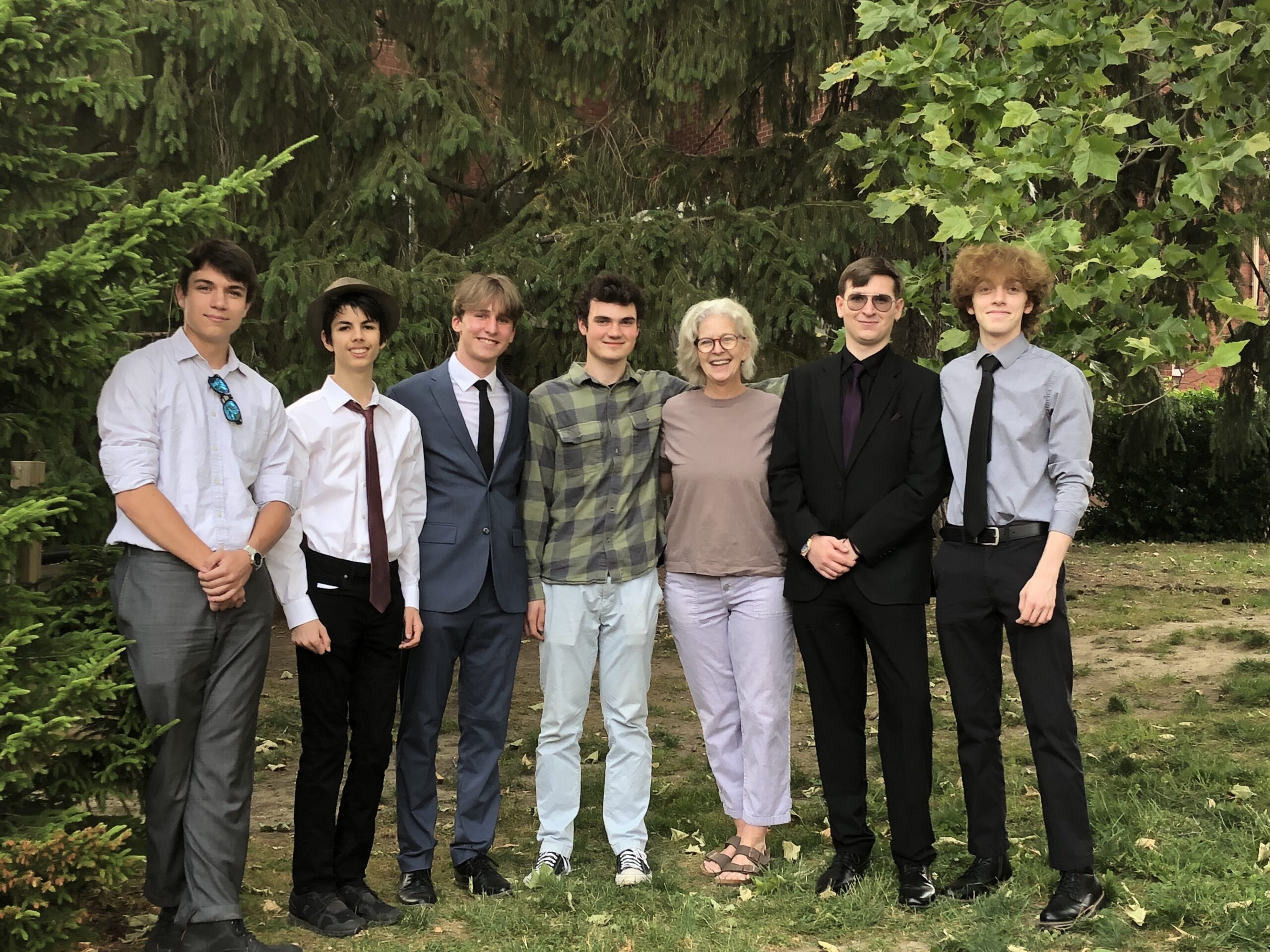
We are thrilled to celebrate the SWS class of 2019, all of whom recently graduated from high school! It is a true joy to learn about what our alums are up to and we wish them all the best on their next adventures.
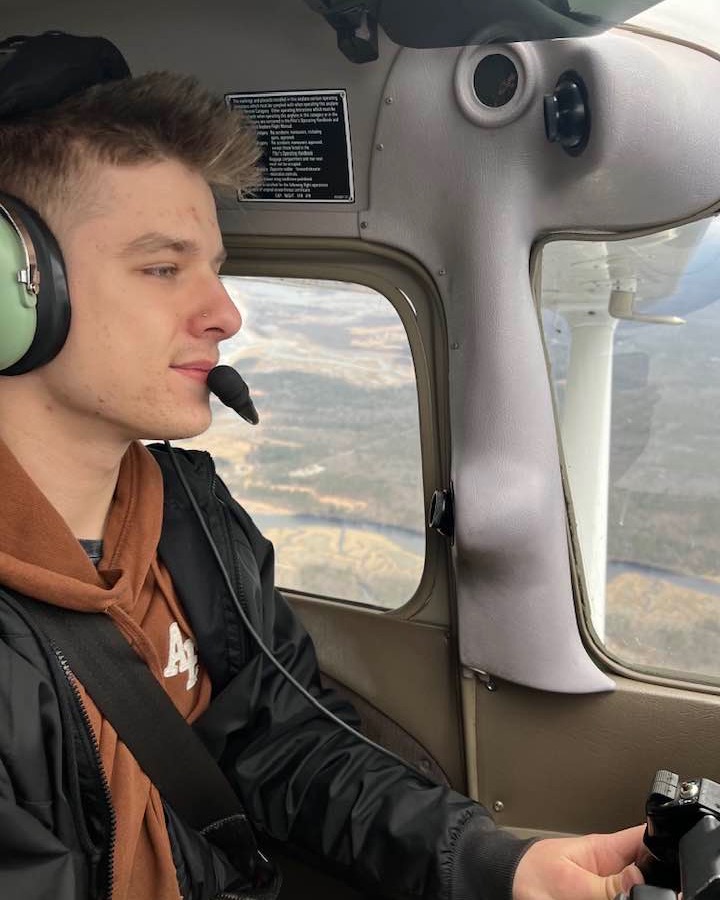
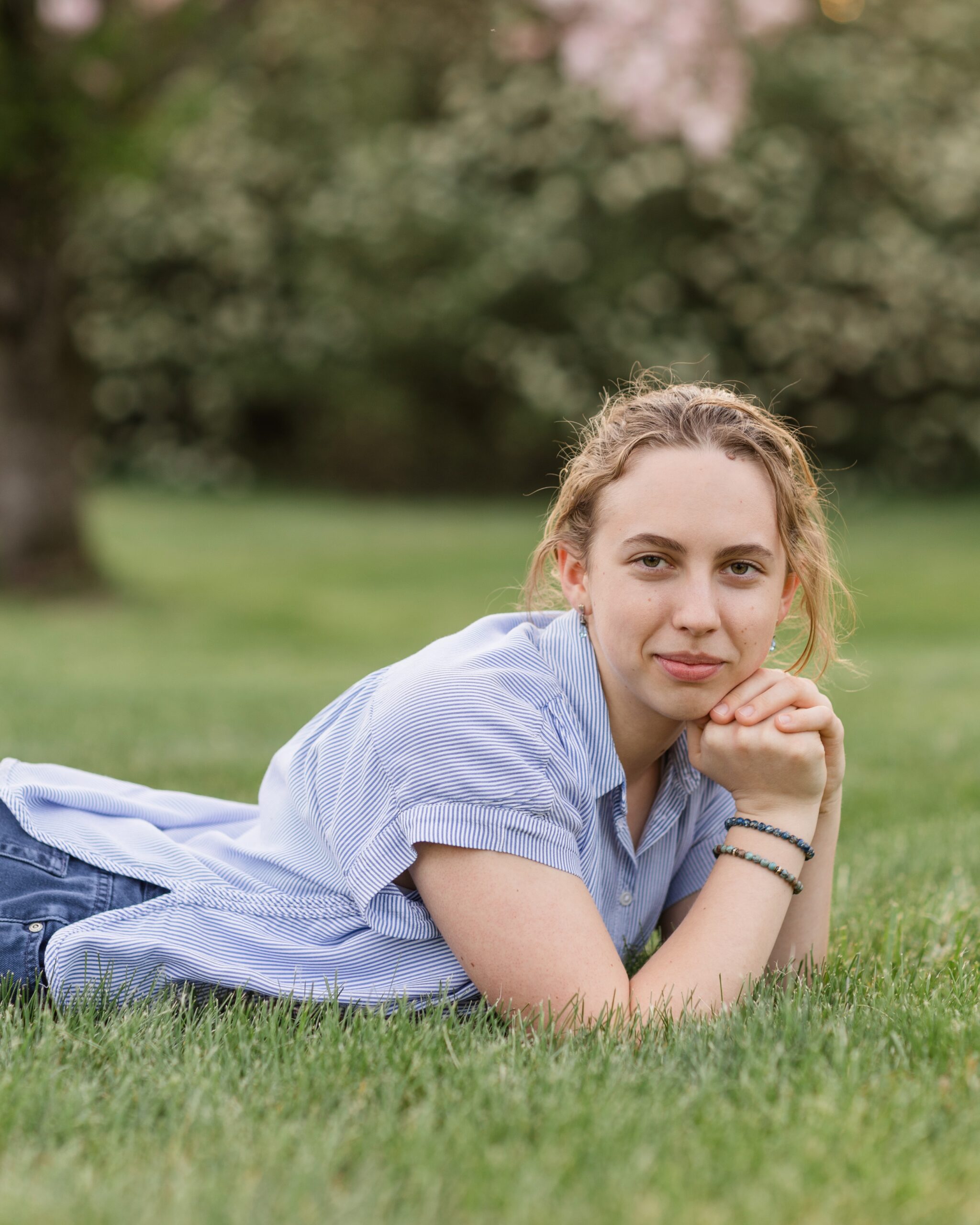

Graduates:
Olivia Alberto, Ian Brant, Abram Darby, Gabriel Elser, Caroline Fischer, Noah Fitz, Connor
Gherardi, Luke Higgins, Lakota Kin, Kathryn Meyer, Timmy Pollock, Wyatt Potter
High Schools Attended:
Donegal High School
Girard Academic Music Program (GAMP) in Philadelphia
Hempfield High School
Lancaster Mennonite High School
Linden Hall School for Girls
McCaskey High School
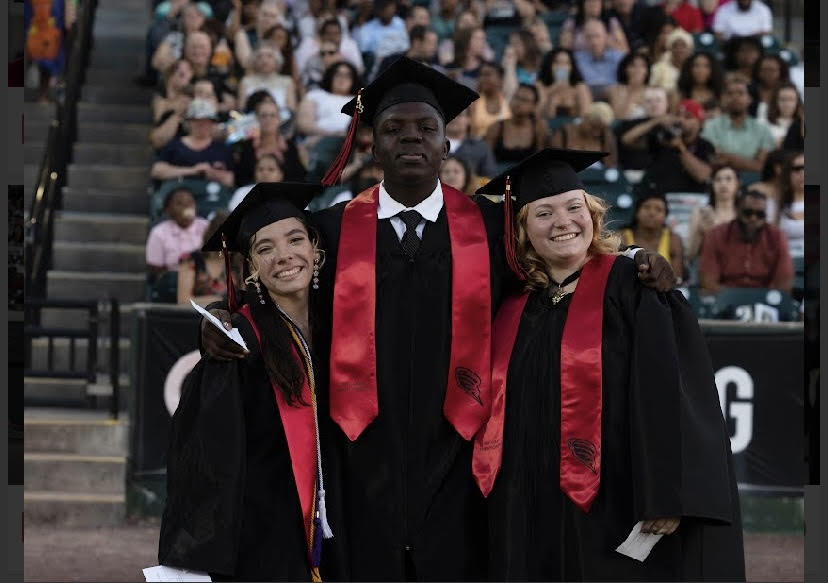
Next Adventures: (In no particular order)
~ Attending Millersville University and then transferring to the University of Pittsburgh to major in
Philosophy.
~ Attending Thaddeus Stevens College and studying Electrical Technology.
~ Spent the summer teaching English in Italy and is heading to Bucknell University.
~ Accepted into the Applied Engineering - Robotics Program at Millersville University.
~ Was nominated and accepted as a Cadet at the U.S. Military Academy West Point in New
York.
~ Working in Information Technology at Lancaster General Health.
~ Attending Millersville University.
~ Spent the summer participating in the Alternatives to Violence Program in Palestine and then
planning on more travel before attending American University in Washington, D.C.
~ Spent the summer as a camp counselor, plans to travel with a friend to see the national parks,
and will attend the University of Delaware for Equine Therapy.
~ Learning how to fly a plane.
~ Attending Stevens Institute of Technology in New Jersey.
~ Attending Elon University in North Carolina.
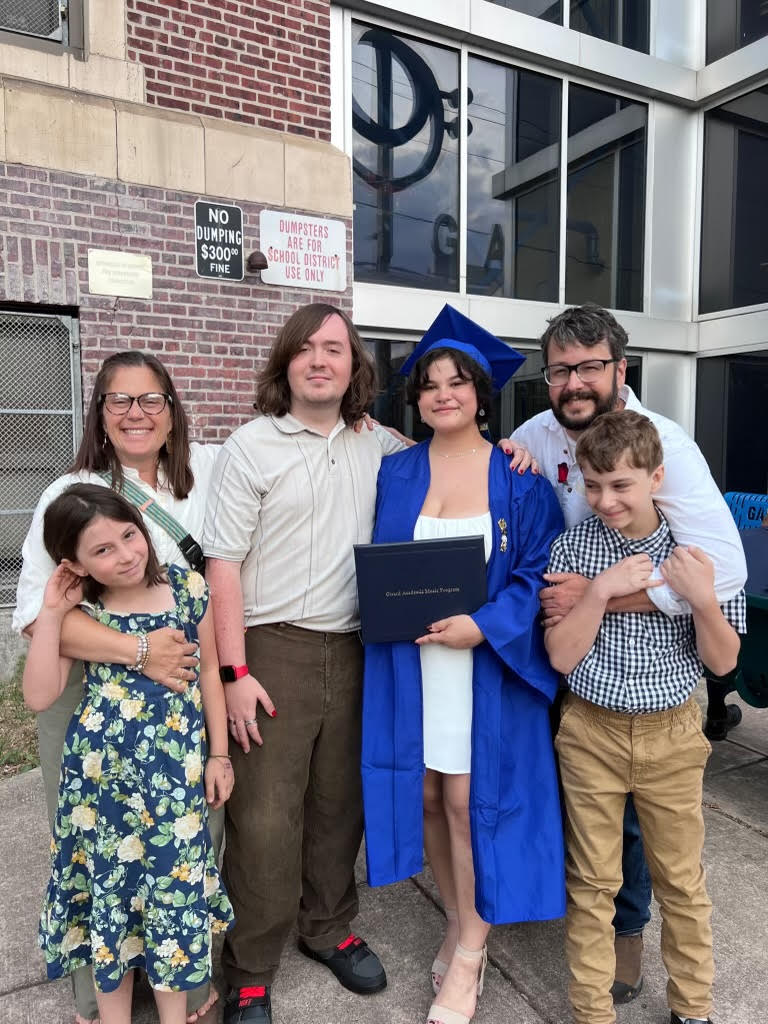
Visiting Kuang-He Waldorf School in Taiwan
Written by SWS Mandarin Teacher, Hui-Ling Singer.

It has been more than three years since COVID-19 began and, finally, this summer I felt safe enough to travel overseas again. I took my daughter, Joy, back to Taiwan to visit my family for three weeks in June. While we were there, I took the opportunity to visit one of the Waldorf Schools in Kaohsiung, my hometown.
It was a rainy day on Thursday, June 15. The temperature was hot and humid. My sister gave me a ride to Kuang-He Waldorf School. From a distance, the school looked like any regular school in Taiwan. Nothing special. I wasn't quite sure if I was in the right place. As I walked closer, I saw the name of the school and little children playing in a circle near the entrance. They reminded me of our 1st graders and I knew I was where I was supposed to be.
Kuang-He Waldorf School was established in the fall of 2012. The school has added one more grade each year and this coming fall, it will have all twelve grades plus a new parent and child class. The school is expanding. Kuang-He Waldorf School is the first Waldorf School in Southern Taiwan that teaches high school levels. The school has about 80 families right now with an average of 10 students per grade. The 8th grade has the most students with 16 total. The class that I observed was 5th grade which had 11 students that day, 7 boys and 4 girls.
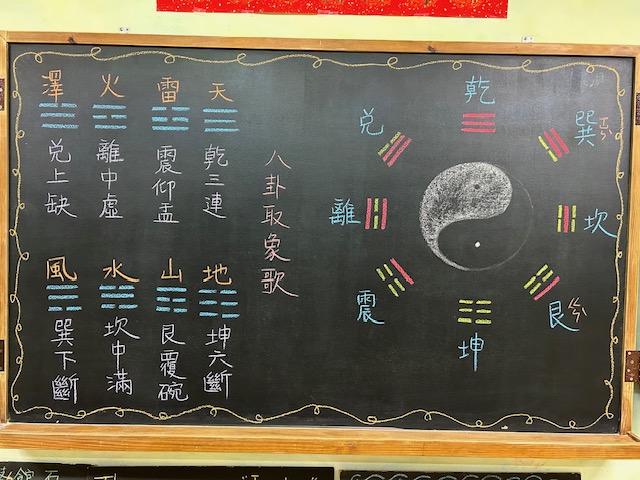
For foreign language learning, English is taught from 1st grade to 12th grade. In 1st grade, it's only 15 minutes per class during the morning circle time twice a week. Beginning in 2nd grade, English is 45 minutes long and is taught twice a week. From 3rd grade to 6th grade, English is taught three times a week, and 7th grade and up, four times a week. In high school, which is from 10th grade to 12th grade, English class is 50 minutes long. Besides English, students in 5th and 6th grade will take Japanese for half a year during club time. In 7th grade, students will choose either Japanese or French for two years. In 10th grade, students will choose either German or Russian for another two years.
I’m super excited about the connection made this summer between our school and Kuang-He Waldorf School in Taiwan. One of my goals for this visit was to find pen pals for my students. The teacher Li-Ru Fu, who was with me the whole time, will be the class teacher for 7th grade this coming school year. She was very happy to hear my idea about pen pals. After a short discussion, we have decided to start with two classes: our 8th grade will pair with their 7th grade and our 5th grade with their 6th grade.



Kuang-He Waldorf School doesn't have its own school building yet. It is currently renting a part of the campus from the He-Chun Institute of Technology which is no longer in operation. The spirit of Waldorf education lives out loud through the colors of the walls no matter where you are in the world. As I was touring around, I could see clearly where the old institute ended and where Kuan-He Waldorf School began. Teacher Fu told me that their dream is to someday build their own school in the center of the city. May their dream come true!

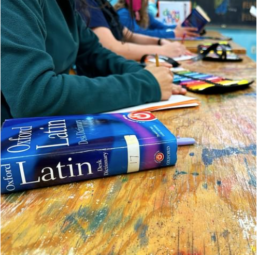

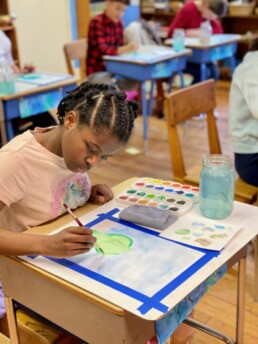
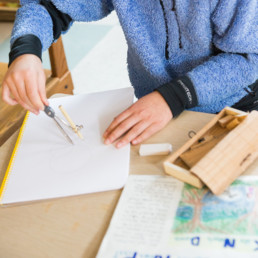

 Jason Piperberg
Jason Piperberg